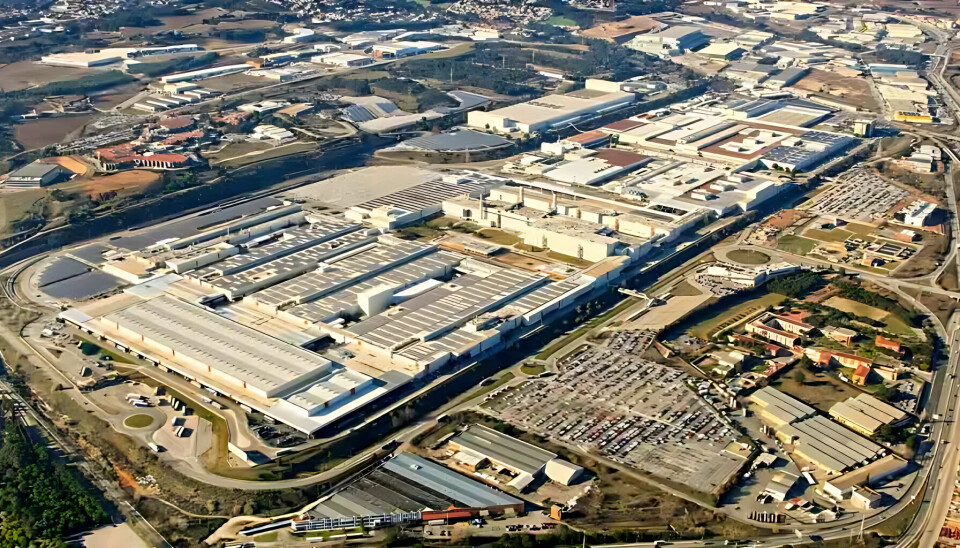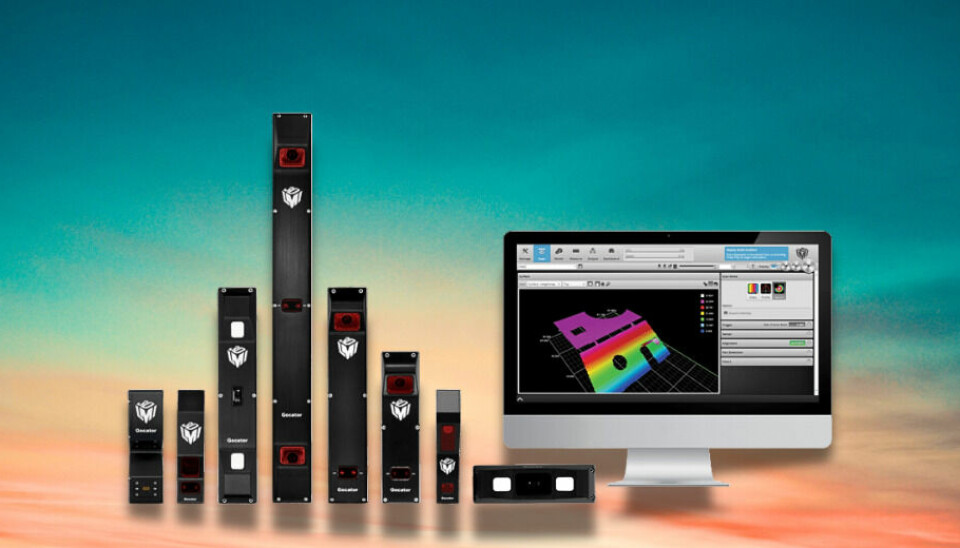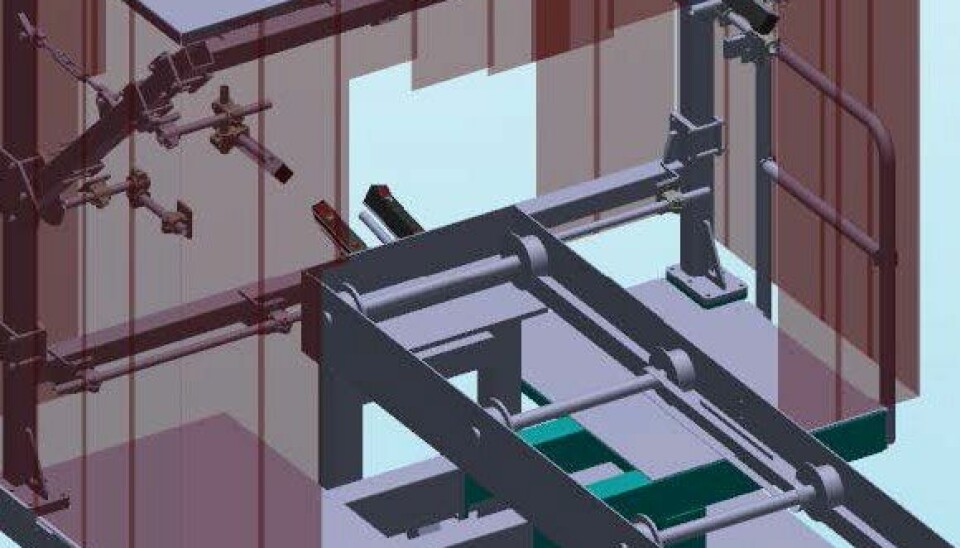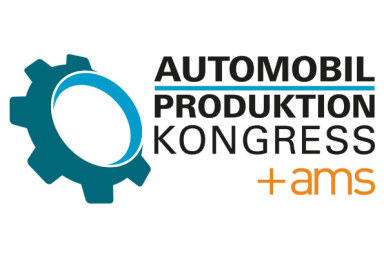Smart Quality Control
SEAT automates bolt checks with 3D sensors at Martorell

SEAT has introduced an automated inspection system at Martorell using 3D sensors and RFID tracking from LMI Technologies, STT Systems and Stemmer Imaging to detect missing bolts, improve traceability and reduce costly production delays.
SEAT’s Martorell factory has introduced a new automated quality inspection system, installed through a collaboration between LMI Technologies, STT Systems and Stemmer Imaging. Designed to detect missing bolts on blanks to minimise delays and costly reworks, the system uses LMI Technologies Gocator 3D sensors and RFID tracking. The technology combines to offer SEAT real-time analysis and full traceability.
Iker Urgandarin, CEO, STT Systems says, “The automated bolt inspection system has dramatically improved SEAT Martorell’s production efficiency. By detecting missing bolts early in the process, they’ve minimised costly delays and rework, while boosting overall equipment efficiency and reducing labour costs. The integration of Gocator 3D sensors and RFID tracking has given them real-time traceability and data insights that support continuous process improvement.”
Step-by-step integration with the welding line
To identify missing bolts as early as possible, the inspection system has been introduced directly after the welding process. “Integration with the line has been done incrementally,” explains Luis Benito, Commercial Director CCO, STT Systems. “In the first phase, the system was installed separately from the line, receiving only the basic signals for its operation, without being part of it. This made it possible to start a phase of data collection and tool adjustment.
“Gocator sensors come factory calibrated, which greatly facilitates their implementation. However, for an accurate point cloud, it was crucial to consider external factors such as the movement of the vehicle chassis and the positioning of the profilometers on the line. To obtain the best results, templates of known dimensions were used to adjust the various system parameters.
“With the system already operational, in a second phase, users were involved with visual feedback to help further refine the tools. Finally, with the system fully adjusted, it was possible to connect it to the line and automate its operation. In this way, a complex system has been successfully implemented with virtually no impact on production.”

Ease of use for operators on the factory floor
Discussing the impact for factory operators, Benito adds, “The system is designed to have few variables accessible to the user. This, combined with the fact that the preliminary set-up phase results in a stable and robust system, means that no complex interventions are necessary apart from normal cleaning and operational checks.
“The tools are organised hierarchically so that some depend on others, and geometric checks are performed to ensure that the data obtained is reliable and that no errors are overlooked. If the system detects an excessive number of errors or anomalies, it generates alarms so that the necessary corrective actions can be taken.”
High-resolution 3D point clouds for accuracy
The inspection system uses multiple Gocator sensors, including 2490 and 2380 models, to ensure the accuracy of results. Sensors are strategically placed to capture the blank from different angles and create high-resolution 3D point clouds. This data is then automatically analysed to determine if the correct number of bolts are present.
“The data from all the profilometers is collected by different PCs and then sent to a master PC, which is responsible for synchronising the entire process and communicating with the transport line,” Benito says. When the inspection is complete, thanks to integration with the production line PLC, the blanks are either allowed to continue in the production process or diverted for manual inspection.

Centralised database and traceability
In the event of missing bolts, the system can indicate the required action for manual rework. By reducing the need for manual inspections, human resources can be deployed as and when required, helping the factory to lower labour costs. All blanks are fitted with RFID tags which are scanned by antennas along the production line to track inspection data associated with a specific blank.
A centralised database with inspection results allows SEAT to conduct historical data analysis, generate statistical reports and monitor performance to identify where the production process can be further optimised.
Benito adds, “The system is fully integrated into the plant's management system and sends data to the plant's control system, so that it can be consulted from any point using the factory's internal tools.”
After seeing positive results in reducing upstream issues at an early stage, SEAT has replicated this inspection solution on two additional lines. “As it is a tunnel, the system has a very small footprint, which helps to integrate it into a small space without requiring a complex redesign of the existing production line,” Benito says.
The system is highly flexible and effectively handles variations by configuring specific tolerances for each measurement, allowing for controlled absorption of fluctuations in individual elements
Beyond bolts: expanding inspection capabilities
While the system currently targets missing bolt identification, the sensors gather extensive data that can be used to expand inspection possibilities. “The system obtains a huge point cloud with which many more checks can be performed than just nuts and bolts,” Benito says. “The 3D information is extremely useful for checking other elements of the chassis at that stage.”

Explaining the adaptability of the system, Hector Ruiz, Head of Sales, Spain and Portugal, Stemmer Imaging says, “The system is highly flexible and effectively handles variations by configuring specific tolerances for each measurement, allowing for controlled absorption of fluctuations in individual elements.
“Each tool has a series of pre-set operations associated with it that help to eliminate noise and automatically reorientate according to the positioning of each part. The system is highly scalable and new measurement elements can be added easily and efficiently.”
Future potential with AI and machine learning
Since introducing this innovative inspection solution SEAT Martorell has reported reduced downtime, improved overall production flow and fewer quality control issues, resulting in better overall efficiency of the production line.
With technology like AI and machine learning increasingly being introduced into automotive manufacturing, LMI Technologies, STT Systems and Stemmer Imaging all see potential for further production line optimisation, greater accuracy and new automation possibilities.
Benito adds, “In addition to the point cloud, the system obtains images that are not currently being exploited, but which in the future can be used to help detect problems in welds, for example. We have a very close relationship with the production team and work with them on a daily basis to find the best solutions to their problems, so we are confident that we will soon be able to evolve the system and obtain even better and more accurate results. AI will certainly help us in this regard.”
Find out more about LMI's solutions, here.


